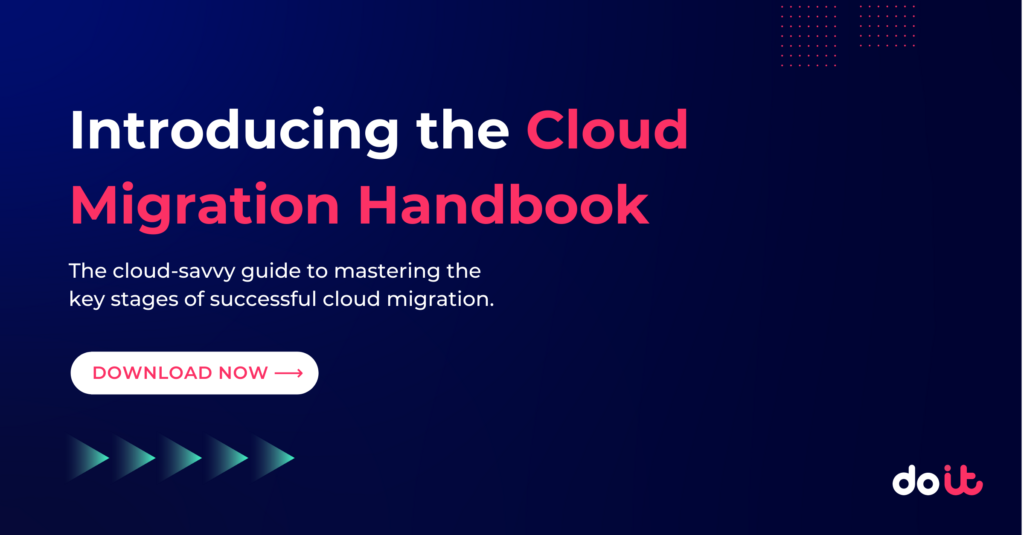Discover the requirements for optimal migration preparation
As companies transition more workloads to the public cloud, poor migration coordination is a major stumbling block. Inefficiencies mean the average company is overspending 14% annually on migration. A key reason is the failure to recognize that successful cloud adoption involves a paradigm shift: Companies must exchange ingrained IT practices for a fundamentally new approach to driving productivity and value.
That's why we're introducing The Cloud Migration Handbook, a new guide to approaching cloud migration in a way that suits your business. This guide covers the key areas you need to focus on to ensure an efficient, effective cloud migration:
- Assessment
- Capability building
- Execution
-
Assessment
You can’t just flick a switch and expect the cloud to perform miracles: You need to have robust structures in place in terms of people, processes, platforms, operations and security.
Both AWS and Google Cloud have developed comprehensive frameworks for organizations embarking on cloud migration.
The AWS CAF identifies foundational organizational capabilities under the headings of business, people, governance, platform, security and operations. It presents a value chain in which technological transformation begets process transformation, which enables the organizational transformation that makes product transformation possible.
Informed by Google’s own evolution in the cloud and experience helping customers, the Google Cloud Adoption Framework is based on the rubric of people, process and technology. It provides a comprehensive review of where organizations are in their cloud development, as well as actionable programs that can get them to their desired position.
As you conduct your pre-migration assessment, look at how your applications might be affected by major infrastructure changes. You can use your chosen provider’s discovery and assessment tools to get a solid view of the current state of your infrastructure, applications and data structures and identify the most appropriate applications and data to migrate to the cloud. And all the while, it is important to prioritize security when you are planning a cloud migration. Appoint an individual to be responsible for security from the outset and include them in all stages of pre-migration planning.
The 6 Rs of migration
To make the process of migrating existing applications more manageable, start with the least complex to chalk up some quick wins as your migration expertise develops:
Retiring
Simply retiring outdated applications before you migrate will generate savings that reinforce the business case for migration, focus your team’s efforts on useful applications and make security’s job easier.
Retaining
Not every workload is suitable for the cloud. Only migrate what makes sense for the business.
Rehosting
Otherwise known as “lift and shift,” rehosting is often the preferred short-term strategy, but relying on it as your primary migration strategy does not leverage the full potential of the public cloud for achieving your business objectives.
Replatforming
Replatforming involves transitioning existing apps from their legacy platform to a modern cloud platform and leverages some benefits of the cloud deployment model without changing the application’s core architecture.
Refactoring and re-architecting
Inspired by a strong business need to scale or improve features and performance, refactoring and re-architecting focus on rebuilding with a cloud-centric view of the application stack. This approach centers on cloud-native features that are simply not available in the application’s existing environment.
2. Capability building
Once you have identified the cloud migration approach you are going to follow, you must build the foundational capability to achieve your objectives.
The support of a cloud partner can be key when you’re building and reinforcing your cloud capabilities. With expertise in cloud migration, particularly in the areas of security and operations automation, they will help you cultivate the skills to deliver the technical and business requirements for a successful migration.
A hands-on approach means you learn how to mobilize your own unique set of tools and practices to migrate a small set of business applications to the cloud, supported by an agile, scalable delivery culture, team structure and management process.
3. Execution
Your cloud partner gets you to a point where you can proceed with an actual cloud migration. They ensure you have mastered the best practices and lessons required to migrate effectively.
They will also provide support and guidance on best practices for defining and establishing automation and agile frameworks that will protect you against common hazards and optimize your cloud migration experience.
Where next
Companies face pressure to pivot at a blistering pace to keep up with technological change and remain competitive. The savviest are embracing cloud-driven transformation to reduce costs and business risks, improve operational efficiencies, increase agility and innovation and ultimately enhance employee and customer experiences with better products and services.
Customers worldwide rely on DoiT to simplify and automate their cloud use by leveraging our intelligent technology portfolio, focused expert consultancy and unlimited technical support — which they receive at no extra cost.
In 2022, DoiT achieved AWS MAP (Migration Acceleration Program) competency status, and we have also secured AWS Premier Partner status. We are a Google Cloud Premier Partner and Managed Service Provider.









